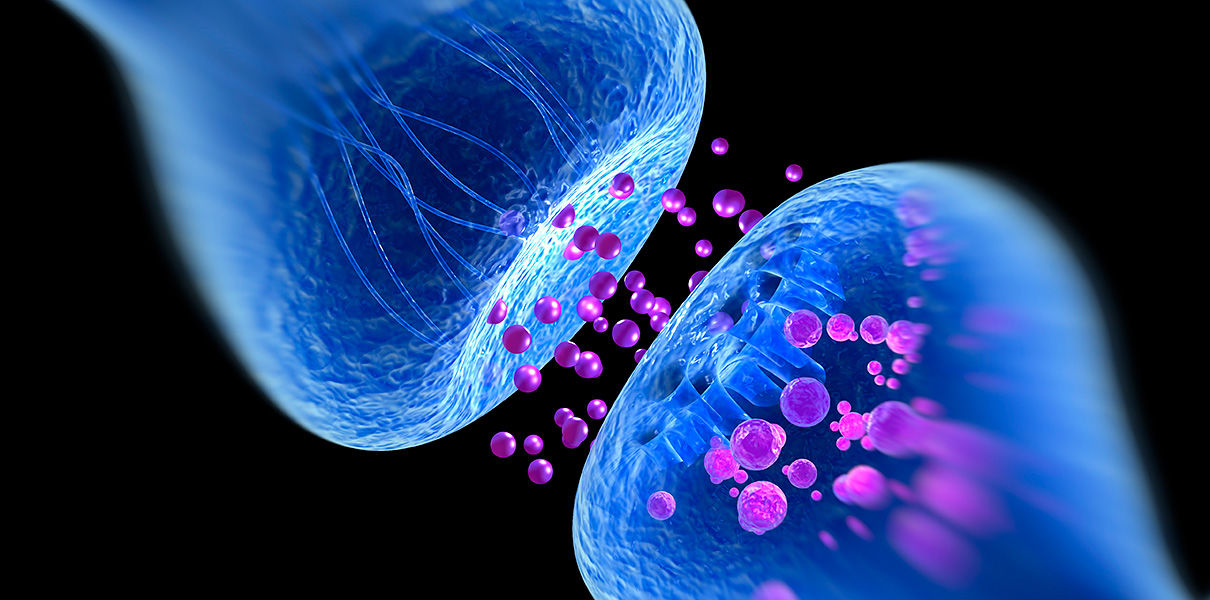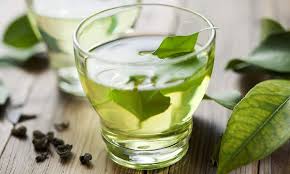
When it comes to cognitive enhancement, we talk a lot about raising levels of this or that neurotransmitter, but what actually are neurotransmitters and what does it mean?
Put simply, a neurotransmitter is a chemical used by a neuron to transmit an on/off message from one side of a synapse (a sort of neural connection point with a slight gap between) to another.
The neurotransmitter molecules are made and/or stored in the neuron on one side of the synaptic cleft (gap), and when the neuron is excited, it releases the chemical into the gap.
On the other side, there are receptors, where the neurotransmitters will fit like keys to a lock when they encounter their appropriate receptor. And when the key fits, the receptor then turns on (or off, depending on the neurotransmitter and the circumstance) a pre-programmed response.
Let’s take an example: acetylcholine (used for, amongst other things, learning and memory)
Acetylcholine is a big molecule, too big to fit through the blood-brain barrier (think of this barrier like a net that lets through only things under a certain size), so it needs to be assembled inside the brain. Any supplements adding to this acetylcholine stock need to be in a form that can be taken apart on one side of the blood-brain barrier and reassembled on the other, like an IKEA bookcase that was too big for the doorway.
Once present in the brain, this hefty molecule is stored in the pre-synaptic terminal; think of it as the bus shelter before braving the journey that is the synaptic cleft.
Then, when you need to do something involving for example learning and memory—like you are right now, reading and learning—the neuron “fires”, that is to say, releases the acetylcholine into the synaptic cleft.
Carried by nothing more than momentum, it reaches the other side, and if it’s lucky, meets an acetylcholine receptor that isn’t blocked. If it meets receptors for other neurotransmitters, say, dopamine receptors or serotonin receptors, it’ll just bounce off, because it’s not the key for those particular locks. But when it meets an acetylcholine receptor, it’ll fit in place, and the neuron on the other side will reverse polarity as a sort of neural switch, passing on the message.
Your brain knows how to interpret this message, and will now tend towards relaxed creativity, learning and memory, alpha wave brain patterns, and in short, all the things associated with the task that you’re performing at the time.
So what happens after the job is done? Why doesn’t it just build up and build up? Well, one of three things happens: either the neurotransmitter will be broken down by a specially tailored enzyme (in the case of the acetylcholine we’ve been looking at, the enzyme that breaks it down is called acetylcholinesterase), or for some neurotransmitters, especially smaller ones, it will be directly taken back up into the neuron whence it came (by a process called “re-uptake”), or it’ll just be dispersed by diffusion, and play no further part in this scene.
This means we can “hack” our own brains, biohacking is tricking them into engaging (or avoiding!) certain states of mind, by affecting these neurotransmitter levels (remember, while we talked about the journey of one molecule there, many are released at once to convey the message, and if you don’t have many, the message isn’t going to be strong, or perhaps not received at all) in one of several main ways:
- Add more of the neurotransmitter, so there’s just more of it in the brain to use—an example in Noobru™ is Alpha GPC, which is a precursor to acetylcholine, meaning that the brain can take it and then assemble the acetylcholine on the other side of the blood-brain barrier
- Inhibit the enzyme that breaks down the molecule—an example in Noobru™ is Huperzine A, which is an acetylcholinesterase inhibitor, so that the synapse keeps more molecules of the neurotransmitter intact and ready for use
- Inhibit the re-uptake process itself—some examples with which you may be familiar are SSRIs (selective serotonin re-uptake inhibitors) that inhibit serotonin re-uptake, thus helping you feel more relaxed and happy by having more serotonin available, or modafinil (a dopamine re-uptake inhibitor) that helps you feel more awake and motivated by having more dopamine available.
Most of the ingredients in Noobru™ are geared around using various methods for increasing levels of acetylcholine, dopamine, serotonin, and GABA—sometimes directly, sometimes indirectly (for example, the Noobru™ ingredient sulbutiamine, in addition to the things it does directly, also prompts the brain itself to use its own processes to take actions to increase choline levels)
So when we say that Noobru™ ingredients work synergistically, that’s really not just office culture mumbo-jumbo, “oh yes, we synergised the process and dynamically captured the potential”, we really mean it, for example (since we’ve been talking about acetylcholine the most here):
Alpha GPC allows the brain to make more acetylcholine
CDP-Choline adds more choline directly
Huperzine A inhibits the breaking-down of acetylcholine, so allows you to keep higher levels for longer
Sulbutiamine ensures your brain is down with this plan of having more acetylcholine so everything goes smoothly
Absorbagen, as the name suggests, helps your body to better absorb other ingredients; you can have the best ingredients in the world and they’ll do you little good if you don’t absorb most of them.
Of course, not all of the 11 nootropic ingredients in Noobru™ are part of the choline team; in fact Noobru™ works on quite a collection of the brain’s systems, and many ingredients have multiple functions (for example, sulbutiamine is also an anxiolytic itself, meaning it reduces anxiety), and some are real renaissance molecules, like l-theanine; working on the neurotransmitters serotonin, dopamine, and GABA, as well as having a lot of direct functions of its own—in short it is the very model of a modern nootropic molecule—but the real magic in Noobru™ is how all these ingredients work together.










Leave a comment
All comments are moderated before being published.
This site is protected by hCaptcha and the hCaptcha Privacy Policy and Terms of Service apply.